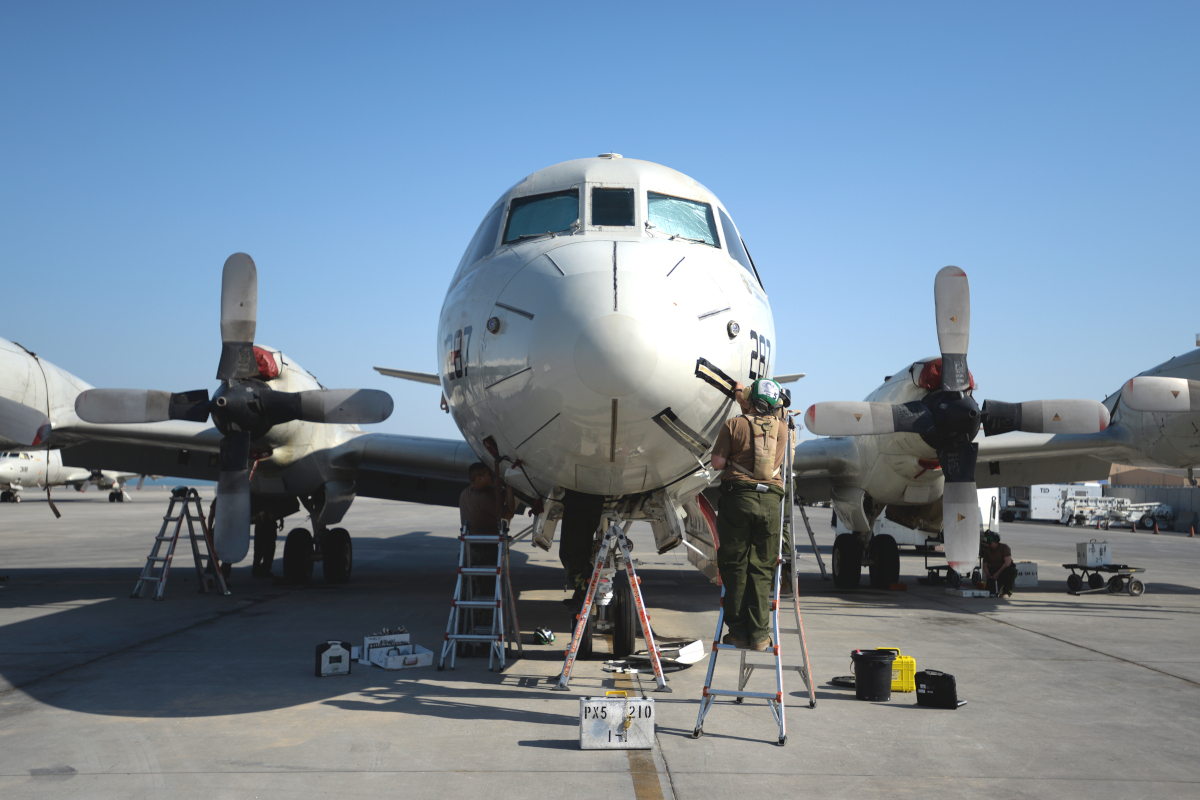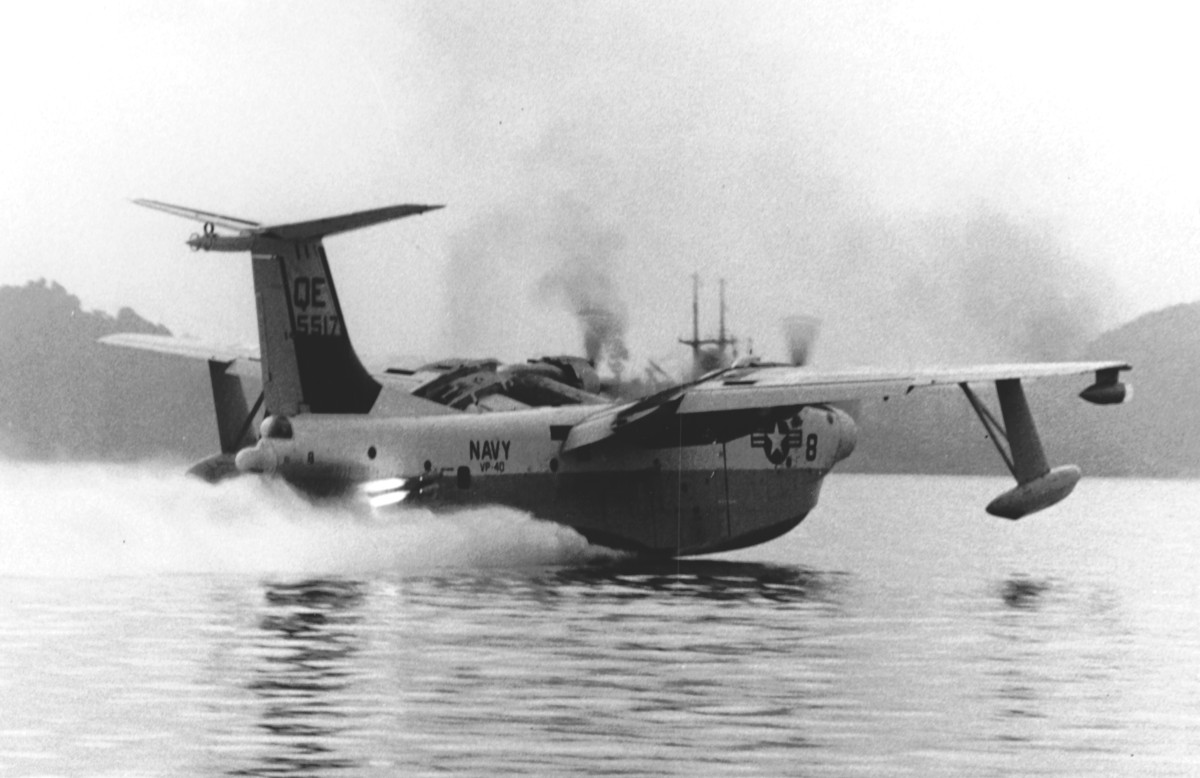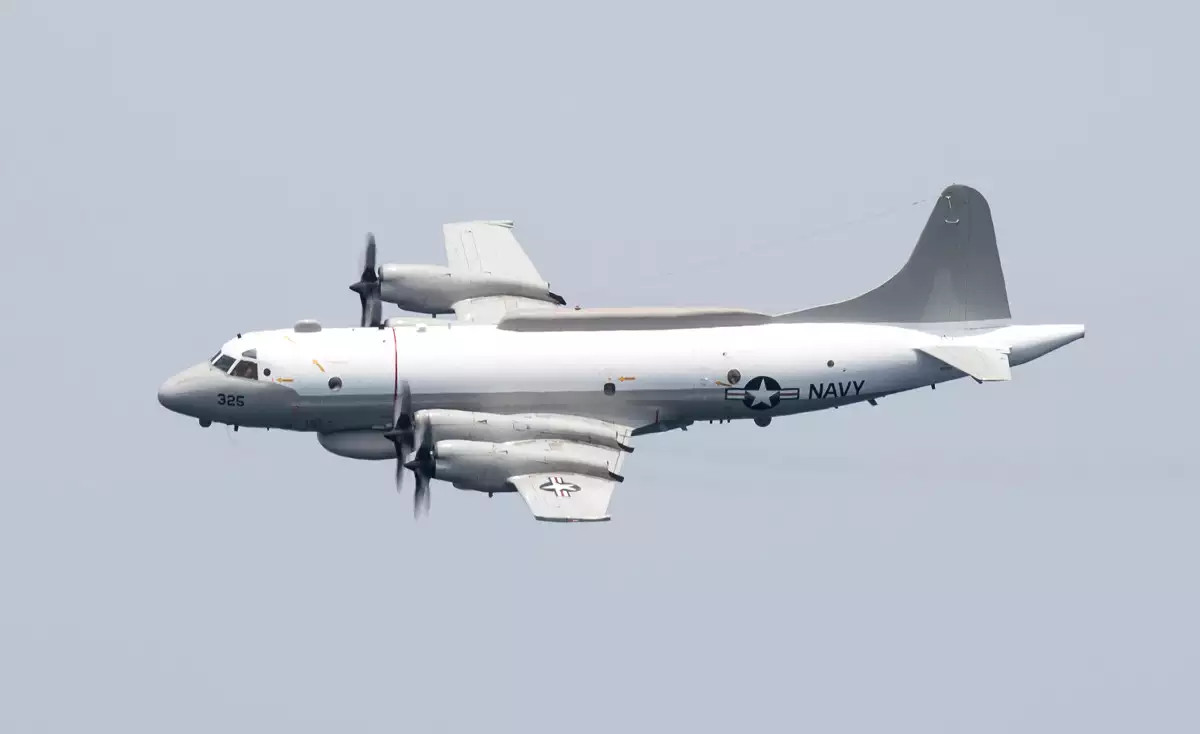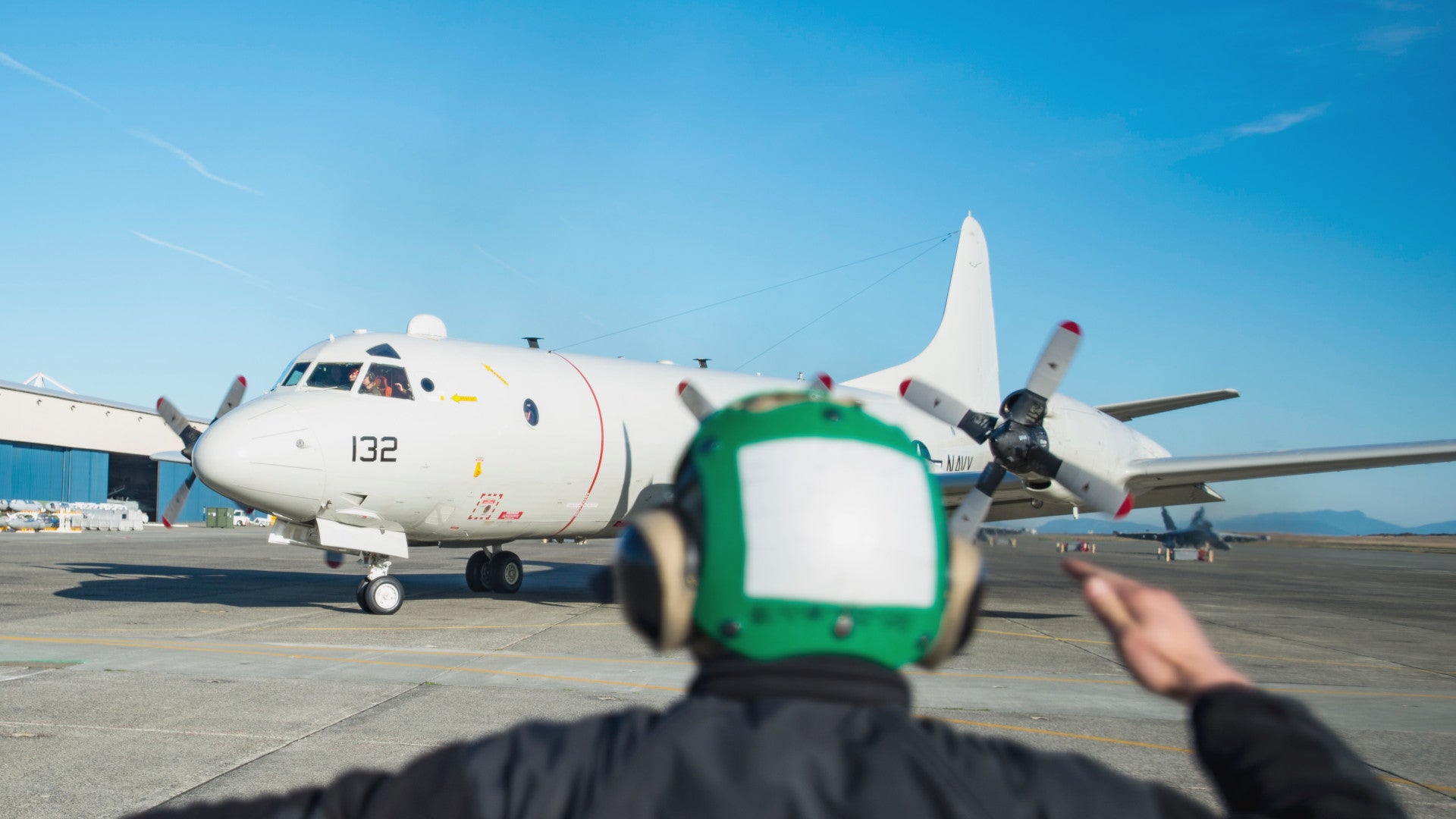The last of the U.S. Navy’s active duty P-3C Orion patrol planes are on their final overseas deployments, split between bases in Bahrain and Japan. The six-month rotations in the Middle East and Pacific regions come as the service prepares to retire all of its Orions in active duty units and replace them completely with the new P-8A Poseidon.
The Whidbey News-Times was the first to report that P-3Cs from Patrol Squadron Four Zero (VP-40), the “Fighting Marlins,” left their main base at Naval Air Station (NAS) Whidbey Island in Washington state at the end of March 2019 for their sundown deployments to Sheik Isa Air Base in Bahrain and Kadena Air Base in Japan. These Orions replaced their counterparts from Patrol Squadron Four Six (VP-46), the “Grey Knights,” at those locations. VP-46’s planes returned to Whidbey Island earlier in April 2019.
VP-46 had also deployed P-3Cs to Europe, but VP-40 did not send any of its aircraft to that region, according to reports. VP-46 is now set to enter a six-month transition period to switch over to the new P-8A. VP-40 will do the same after it returns to Whidbey Island.

From Sheik Isa, VP-40s P-3Cs are positioned to conduct routine anti-submarine warfare and counter-piracy patrols, among other missions, throughout the region, including around various strategic points, such as the Strait of Hormuz. The planes at Kadena, situated on the island of Okinawa, will be flying many of the same missions in the western Pacific and may find themselves tasked to help keep an eye out for North Korean ships looking to circumvent international sanctions. You can read more about the kind of missions that Navy patrol squadrons undertake here.
“We could not be more proud of the effort given by the men and women of VP-40,” U.S. Navy Commander Patrick O’Reilly, the unit’s commanding officer, told the Whidbey News-Times. “Even when the aircraft fought against us, even when the tempo was high and the days were long, we continued to fight.”

O’Reilly was referring to a 12-month readiness cycle to get the unit prepared for its final deployment. His comments also speak to the increasing difficulties in sustaining the aging P-3Cs at a time in which U.S. military aviation communities have already found themselves under considerable strain to meet readiness goals.
The Navy introduced the P-3A, originally known as the P3V-1, in 1962. The P-3C model began entering service in 1969 and subsequently went through a number of major upgrade programs. VP-40 first began flying the Orion in 1967, transitioning at the time from the SP-5B Marlin flying boat.

VP-40’s SP-5Bs had already been flying combat operations off the coast of Vietnam and its P-3s continued serving in that theater in the 1970s. Some of unit’s Orions also took part in the search for survivors from a Navy EC-121M Warning Star intelligence gathering aircraft that North Korean fighter jets shot down in 1969.
The squadron also supported the search and rescue effort after Soviet fighter jets shot down Korean Airlines Flight 007 in 1983. Eight years later, they supported Operation Desert Storm in the Persian Gulf region, flying marathon missions from Diego Garcia thousands of miles away in the Indian Ocean.
Since then, the squadron’s P-3Cs have flown various anti-submarine, search and rescue, counter-drug, and intelligence, surveillance, and reconnaissance (ISR) missions. VP-40 has also taken part in the fight against ISIS in Iraq and Syria, including ISR sorties employing aircraft equipped with Raytheon’s highly capable AN/APS-149 Littoral Surveillance Radar System (LSRS).

After this deployment and the subsequent transition period, VP-40 is set to continue performing this same general set of missions with the much more capable P-8A, which first entered Navy service in 2013. These aircraft have been steadily replacing P-3Cs across the service. The last active-duty Orion squadron based on the East Coast, Patrol Squadron Two Six (VP-26), the “Tridents,” began their final deployment in 2015 and transitioned to the Poseidon the following year.
It is important to note that VP-40 and VP-46’s P-3Cs aren’t the only aircraft of this general type still in active-duty Navy service. The service’s highly secretive Patrol Squadron Special Projects Unit Two (VPU-2), the “Wizards,” is still flying a number of P-3Cs equipped with a variety of specialized intelligence-gathering equipment. These aircraft are distinct from the Navy’s fleet of EP-3E Aeries II signals intelligence aircraft, which are converted P-3Cs, and that are also set to remain in service for some time longer.

In September 2018, the Navy announced it would establish Fleet Support Unit One at NAS Jacksonville in Florida to replace VPU-2. This new unit “will configure and operate P-8 aircraft to provide follow-on special mission capability in place of projects patrol squadron (VPU) P-3 aircraft due to sundown in 2019,” according to an official notice. Replacing the “special projects” P-3s with the P-8A makes good sense since the Posiedons already has significant electronic and signals intelligence capabilities, to begin with.
Even after VP-40 and VPU-2 trade in their last P-3Cs, two Navy Reserve patrol squadrons will also still be flying Orions. These are Patrol Squadron Six Two (VP-62), the “Broadswords,” at Jacksonville, and Patrol Squadron Six Nine (VP-69), the “Totems,” at Whidbey Island. The Navy expects to retire the very last P-3C from service in 2023.

Still, VP-40’s final deployments certainly mark the beginning of the end of an era for U.S. naval aviation. When the last Orions head off for their well-deserved retirement in four years, variants of aircraft will have been in Navy service for more than six decades.
Contact the author: jtrevithickpr@gmail.com
